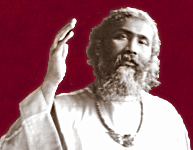Volume XIV - The Smiling ForeheadPrefaceTHIS VOLUME, the fourteenth of what is to constitute the revised complete edition of Hazrat Inayat Khan's works on the philosophy, theory and practice of mysticism, is also the third appearing under the new serial heading of A Sufi Message of Spiritual Liberty. Adopting the title Hazrat Inayat Khan himself gave to his first publication, this series is intended gradually to replace the by now familiar one, published from 1960 as The Sufi Message of Hazrat Inayat Khan. The editorial motives for continuing and revising the publication of the complete edition have been explained at length in the Preface to Volume VIII. Beyond recalling that the present series aims at the completion of the entire corpus of Inayat Khan's teachings, and intends to maintain its distinctive oral character, there is little reason to expound these motives anew. Suffice it to say that the new volumes VIII and XIV jointly represent a much expanded version of Sufi Teachings, the eighth volume in the earlier series. However, a section of that earlier volume VIII, containing introductory chapters on the history, nature and aim of Sufism and the Sufis, is still retained for inclusion in a subsequent volume, just as some individual lectures on other subjects which in the opinion of the editors seem to be more at home elsewhere. Some subjects now appear under a different – mostly their original – title, while a very limited number of chapters had to be left out altogether, as they were compiled from two or more different sources, or derived from an uncertain origin. Some of Inayat Khan's earlier sayings and expressions, conserved in the form of fragments, were compiled by his first disciples and with his consent reconstructed as articles. In later times – from 1921/22 onward – his lectures and talks were accurately and completely noted down and conserved. The present edition renders these in their entirety. Different items compiled in chapters of the first edition of Sufi Teachings are now as far as they could be retraced to their origin – published separately as ideas, aphorisms and answers to questions. (See for instance the chapters 'Love', 'Justice and Forgiveness', 'Conscience' and 'Pairs of Opposites'). More detailed information on this subject is obtainable from the publisher or from the General Secretariat of the Sufi Movement: Anna Paulownastraat 78, 2518 BJ The Hague, Netherlands. Like its predecessors, the present volume contains discourses and teachings given at different times and places, rather than a series of lectures on a single theme. However, in their choice of the published material the editors have endeavored now to include lectures which throw a further light on a given subject, sometimes providing a more extensive explanation, sometimes treating the same topic from different points of view. The list of documents at the end of the book contains further relevant information. Hazrat Inayat Khan considered a faithful rendition of his words essential in order to explain his teachings fully. Truth, according to him, is what cannot be put into words. No system could encompass the truth which to the Sufi is the same as God. Yet his whole work consists in giving this truth to the world, to be discovered in all its different aspects, as the various facets of a diamond. In the chapters of these Sufi Teachings Hazrat Inayat Khan shows his constant desire to instruct and enlighten humanity, guiding it towards a better knowledge and understanding of the world's many problems and of life's endless difficulties.
|

